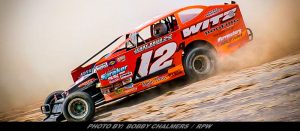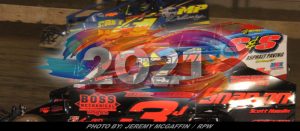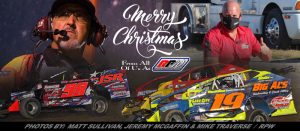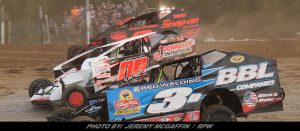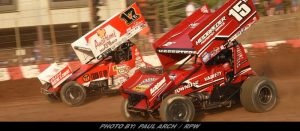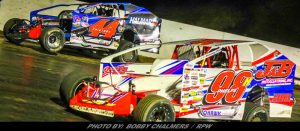Time To Put A Set Up In Your Four-Cylinder
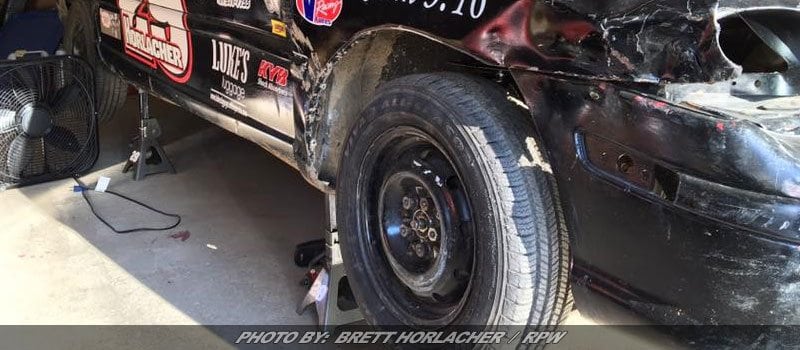

Column By: BRETT HORLACHER / RPW – CLIFTON PARK, NY – Racers are often found in the shop, late at night, and even at the last minute placing well-researched and hopeful setups into their cars. In this, the fourth of a five part series, I will continue to show you what’s required to get you from the grandstand to the cockpit of you own race car. This is the building a 4-Cylinder race car.
Races are indeed won in the shop. From the premier divisions to the support classes, having a well-handling race car is supremely important to getting to victory lane.
Due to the lack of adjustment options in a stock 4-cylinder chassis, racers must often be creative to get as much speed out of their car as possible.
Again, Check Your Rules
For setup, there are many rules that limit or prohibit certain modifications and adjustments. Having your track’s rules printed out and available for review is still a very good idea. Before spending time making an adjustment, ensure that is allowed by the rules.
Shop Safety
Wear safety glasses, especially when hitting/striking/grinding/working where items can fall into your eyes.
Wear gloves when dealing with sharp items and glass. This includes sheet metal. Have a working fire extinguisher available and nearby.
Suspension Setup
Each corner of the car moves in three-dimensions, or axis. These are caster, camber and toe. The first axis, ‘caster’ is usually unable to be altered without significant alteration to the stock mounting locations. Due to that, I will omit it from this discussion.
The second axis, ‘camber,’ is how much the tire leans in or out. It is measured in degrees. At zero degrees of camber, the tire is exactly straight up and down. As the top of the tire deviates from zero, it is measured as positive “outward” or negative “inward.”
A good way to think of this is if you placed a dollar bill on the top of the tire and it leans towards you, that is a good thing, and therefore “positive.” The opposite can be said about negative camber.
You can adjust camber by loosening the bolts that connect the spindle “hub assembly” to the lower portion of the strut ‘shock and spring combination device.’ Once the camber is set, tighten the bolts, and sometimes weld them in place.
Camber is a very useful adjustment because as the car goes into the corner, the force causes the outer wheel to compress and the friction on the bottom of the tire in contact with the racing surface causes it be to forced inward (or outward on the inner wheels). The portion of the tire’s tread called the ‘contact patch’ is kept at a useful maximum to keep control of the car at the highest cornering speed possible.
The third axis, ‘toe,’ is the measurement of the difference of the distance between the same spot on a tire on the front and back. It is measured as ‘toe-out,’ which means that the front of the tires point outwards, and ‘toe-in’ which means that the front of the tires point inward. ‘Neutral,” or zero, means that the tires are completely straight and there is no difference
Toe is a useful adjustment to ensure that as you turn the wheel in the corner you get optimum camber angle and that both tires are turning the car as evenly as possible.
Toe is adjusted primarily at the tie rod. You can measure the toe by rolling the car back and forth, taking a measurement, making your adjustment, and repeating the process. Do this until you get two measurements that are very close to your desired toe.
Rear wheel adjustments (other than camber) are usually more difficult to perform. Check your rules to see what you’re allowed to adjust.
Ask your fellow competitors what adjustments they make to their car. Take all the information, as well as what you gather using your eyes, into your setup. Take notes and monitor how your car performs with each setup.
Engine Modifications and Tune Up
Check your track rules to see what you are allowed to modify or upgrade with the engine. Engine modifications cost money, and getting a part confiscated because it doesn’t meet the spec not only costs money, but time.
There are a multitude of modifications that are promoted by various online forums. Check your rulebook, and evaluate if you want to spend the money, time, or both to try to get more speed out of the car.
Engine maintenance is a must. You will be taking a car motor designed for somewhat low RPMs, various lower speeds and pushing it to its limit. This requires that it have fresh oil, clean filters and at a somewhat regular interval, spark plugs, and timing belts changed out.
A fresh oil change and new set of plugs in a motor will often make it come to life. The chief problem is that all of these maintenance items cost money.
Before loading the car up, at a minimum you must check the oil level, coolant level, transmission fluid level (if applicable) and spark plug wire tightness. Keeping fluid levels in range will stave off most engine damage and keep the maintenance and repair costs low.
Tire Pressures
Tire pressure is one of the easiest adjustments to make to a car. Pressure setups vary wildly from track to track, car to car, and different track conditions. Here are some tips.
Check your pressures using the same gauge. If you change gauges, take a measurement with the new one first to see if there is any difference between the old and new readings. Adjust your notes accordingly.
High pressures make a tire harder, less susceptible to sidewall folding/damage, and keeps the contact patch flatter.
Low pressures make a tire softer, it will flex more, but this causes other problems. That includes sidewall damage and the tire itself being torn off of the wheel.
Generally, your lower pressures are in the front, and the higher pressures are in the rear (on a 4-cyl).
Here’s a personal tip for you. When you are done with tire pressures, check all the wheel lug nuts to make sure they are tight on the car. This is a great opportunity to make sure that it gets completed.
Okay…Time to get excited, your car is finished, set up and is ready to hit the track. In the next installment we’ll talk personal safety, tips for getting your car to the track safely, and some good things to think about during your first few races.


